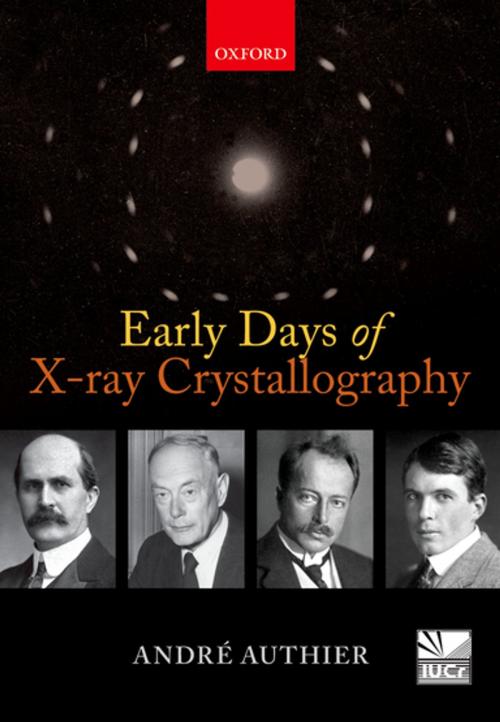Early Days of X-ray Crystallography
Nonfiction, Science & Nature, Science, Chemistry, Crystallography, Technology| Author: | André Authier | ISBN: | 9780191635021 |
| Publisher: | OUP Oxford | Publication: | August 1, 2013 |
| Imprint: | OUP Oxford | Language: | English |
| Author: | André Authier |
| ISBN: | 9780191635021 |
| Publisher: | OUP Oxford |
| Publication: | August 1, 2013 |
| Imprint: | OUP Oxford |
| Language: | English |
The year 2012 marked the centenary of one of the most significant discoveries of the early twentieth century, the discovery of X-ray diffraction (March 1912, by Laue, Friedrich and Knipping) and of Bragg's law (November 1912). The discovery of X-ray diffraction confirmed the wave nature of X-rays and the space-lattice hypothesis. It had two major consequences: the analysis of the structure of atoms, and the determination of the atomic structure of materials. This had a momentous impact in chemistry, physics, mineralogy, material science, biology and X-ray spectroscopy. The book relates the discovery itself, the early days of X-ray crystallography, and the way the news of the discovery spread round the world. It explains how the first crystal structures were determined by William Bragg and his son Lawrence, and recounts which were the early applications of X-ray crystallography in chemistry, mineralogy, materials science, physics, biological sciences and X-ray spectroscopy. It also tells how the concept of space lattice developed since ancient times up to the nineteenth century, and how our conception of the nature of light has changed over time. The contributions of the main actors of the story, prior to the discovery, at the time of the discovery and immediately afterwards, are described through their writings and are put into the context of the time, accompanied by brief biographical details. This thoroughly researched account on the multiple faces of a scientific specialty, X-ray crystallography, is aimed both at the scientists, who rarely subject the historical material of past discoveries in their field to particular scrutiny with regard to the historical details and at the historians of science who often lack the required expert knowledge to scrutinize the involved technical content in sufficient depth (M. Eckert - Metascience).
The year 2012 marked the centenary of one of the most significant discoveries of the early twentieth century, the discovery of X-ray diffraction (March 1912, by Laue, Friedrich and Knipping) and of Bragg's law (November 1912). The discovery of X-ray diffraction confirmed the wave nature of X-rays and the space-lattice hypothesis. It had two major consequences: the analysis of the structure of atoms, and the determination of the atomic structure of materials. This had a momentous impact in chemistry, physics, mineralogy, material science, biology and X-ray spectroscopy. The book relates the discovery itself, the early days of X-ray crystallography, and the way the news of the discovery spread round the world. It explains how the first crystal structures were determined by William Bragg and his son Lawrence, and recounts which were the early applications of X-ray crystallography in chemistry, mineralogy, materials science, physics, biological sciences and X-ray spectroscopy. It also tells how the concept of space lattice developed since ancient times up to the nineteenth century, and how our conception of the nature of light has changed over time. The contributions of the main actors of the story, prior to the discovery, at the time of the discovery and immediately afterwards, are described through their writings and are put into the context of the time, accompanied by brief biographical details. This thoroughly researched account on the multiple faces of a scientific specialty, X-ray crystallography, is aimed both at the scientists, who rarely subject the historical material of past discoveries in their field to particular scrutiny with regard to the historical details and at the historians of science who often lack the required expert knowledge to scrutinize the involved technical content in sufficient depth (M. Eckert - Metascience).















